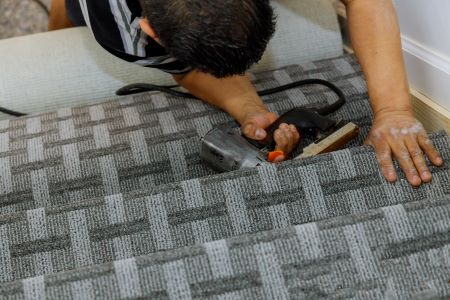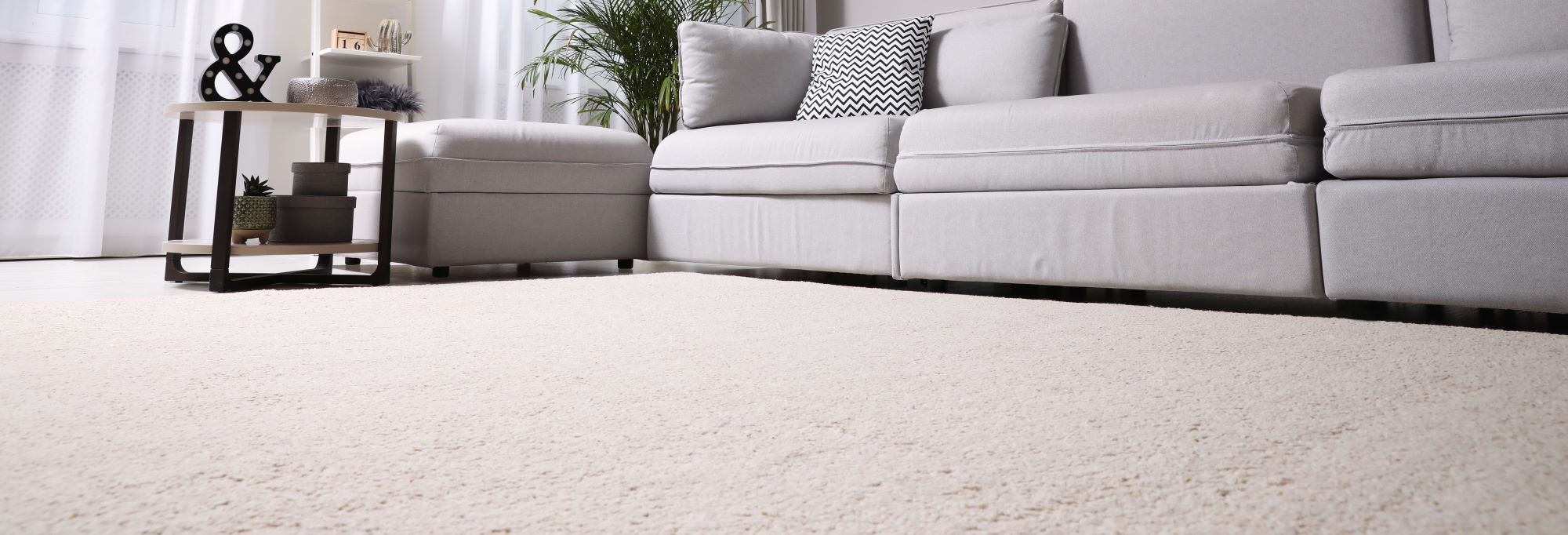Carpets play a vital role in enhancing the aesthetics and comfort of our homes and workplaces. However, over time, they can suffer from wear and tear, leading to unsightly holes and tears. When your beloved carpet is damaged, it doesn’t necessarily mean you need to replace the entire thing. In many cases, professional carpet repair can bring new life to your floor covering. This guide will provide you with a comprehensive overview of the process for repairing a carpet, including carpet hole repair, torn carpet repair, and the role of rug repair specialists.
Understanding the Need for Carpet Repair
Before delving into the process of carpet repair, it’s important to understand why it might be necessary. Carpets can sustain damage for various reasons, including:
- Wear and Tear: Over time, heavy foot traffic can wear down carpet fibers, leading to thinning and weakening.
- Accidental Damage: Accidents happen, and spills, burns, or other mishaps can result in carpet damage.
- Pets: Pets can be a source of carpet damage through scratching, digging, or soiling.
- Furniture: Moving heavy furniture can cause tears or indentations in the carpet.
- Water Damage: Flooding or water leaks can severely damage carpets, causing mold and mildew growth.
- Age: As carpets age, they may become more susceptible to damage due to deteriorating backing or adhesive.
Assessing the Damage
The first step in the carpet repair process is to assess the extent of the damage. This assessment will help determine whether the damage can be repaired or if it’s more cost-effective to replace the carpet. Here’s how to assess the damage:
- Identify the Damage: Carefully examine the carpet to locate all holes, tears, or other forms of damage. Take note of their size and location.
- Measure the Damage: Use a measuring tape to determine the dimensions of the damaged area. Accurate measurements will be essential when it comes time to patch or repair the carpet.
- Determine the Cause: Understanding the cause of the damage can help prevent future issues. For example, if the damage is due to a recurring pet behavior, addressing the root cause is essential.
- Consider Carpet Age: Take into account the age and overall condition of the carpet. Older carpets with extensive damage may not be good candidates for repair.
- Consult a Professional: If you’re unsure about the extent of the damage or the repair options available, it’s a good idea to consult with a professional rug repair specialist.
Gathering the Necessary Tools and Materials
Once you’ve assessed the damage and decided to proceed with the repair, you’ll need to gather the necessary tools and materials. The specific items required will depend on the type and extent of the damage, but here are some common tools and materials used in carpet repair:
- Replacement Carpet: If the damage is extensive, you may need a matching piece of carpet for patching.
- Carpet Seam Tape: Seam tape is used to join pieces of carpet together seamlessly.
- Carpet Adhesive: A high-quality carpet adhesive is essential for securing patches and ensuring they stay in place.
- Carpet Padding: Replacement carpet padding may be necessary if the padding under the damaged area is also affected.
- Utility Knife: A sharp utility knife will be needed for cutting and trimming the carpet.
- Straight Edge: A straight edge or ruler helps ensure clean and precise cuts.
- Carpet Iron: A carpet iron is used to activate the adhesive and secure the carpet patch.
- Carpet Stretcher: If the carpet needs to be stretched, a carpet stretcher is a vital tool.
- Heavy Objects: Weights or heavy objects can be used to hold the patched area down while the adhesive dries.
- Carpet Cleaner: In some cases, you may need a carpet cleaner to remove stains or marks before making the repair.
Preparing for the Repair
Before you begin the actual repair, it’s essential to prepare the damaged area and gather your materials. Here’s how to get ready for the repair:
- Clean the Area: Remove any dirt, debris, or loose fibers from the damaged area. A clean surface ensures better adhesion.
- Cut Out the Damaged Section: Use a utility knife to carefully cut away the damaged section of the carpet. Make sure the edges are clean and even.
- Cut a Replacement Patch: If you have a matching piece of carpet, cut a replacement patch that is slightly larger than the hole or tear. This extra material will allow for a secure bond.
- Trim the Carpet Padding: If the padding under the damaged area is also affected, trim it to match the size of the hole or tear.
Repairing a Small Carpet Hole
Small carpet holes can often be repaired relatively easily. Here’s a step-by-step guide to repairing a small carpet hole:
- Place the Patch: Apply a layer of carpet adhesive to the underside of the replacement patch and press it firmly into the hole.
- Align the Edges: Ensure that the edges of the patch match up with the surrounding carpet fibers. Use a straight edge to help with alignment.
- Apply Heat: Use a carpet iron to activate the adhesive and secure the patch in place. Follow the manufacturer’s instructions for temperature settings and duration.
- Press Down: Once the adhesive is activated, press down firmly on the patched area to ensure a strong bond.
- Allow to Dry: Let the repaired area dry completely before walking on it. You can use heavy objects or weights to keep the patch in place while it dries.
- Trim Excess Material: Use a utility knife to trim any excess carpet fibers that may stick out around the patched area.
- Clean the Carpet: After the repair is complete and the adhesive is fully dry, clean the carpet to remove any adhesive residue or marks.
Repairing a Torn Carpet
Repairing a torn carpet involves joining the two torn edges together seamlessly. Here’s a step-by-step guide to repairing a torn carpet:
- Clean and Trim: Clean the torn edges and trim any loose or frayed fibers to create clean, even edges.
- Apply Carpet Seam Tape: Place a strip of carpet seam tape underneath the torn edges, ensuring that the adhesive side faces up.
- Align and Press: Carefully align the torn edges of the carpet and press them onto the seam tape. Make sure they are flush and even.
- Apply Heat: Use a carpet iron to activate the adhesive on the seam tape. Move the iron slowly over the seam to ensure a secure bond.
- Press and Cool: After applying heat, press down firmly on the repaired area to ensure a strong bond. Allow it to cool completely.
- Trim Excess Tape: Trim any excess seam tape that may extend beyond the repaired area.
- Clean and Vacuum: Clean the repaired area and vacuum the entire carpet to ensure a uniform appearance.
Repairing Larger Damaged Areas
When dealing with larger damaged areas, such as extensive tears or burns, the repair process may involve more complex steps. Here’s a general outline of how to repair larger damaged areas:
- Cut Out the Damaged Section: Use a utility knife to carefully cut away the damaged portion of the carpet, creating a clean and even edge.
- Create a Patch: If you have a matching piece of carpet, cut a replacement patch that is slightly larger than the damaged area. If a matching piece is unavailable, consider using a piece from a hidden or inconspicuous area of the carpet, like a closet.
- Trim the Padding: Ensure that the padding under the damaged area is also trimmed to match the size of the hole or tear.
- Attach the Patch: Apply carpet adhesive to the underside of the patch and press it firmly into place, aligning it with the surrounding carpet fibers.
- Apply Heat: Use a carpet iron to activate the adhesive on the patch and secure it in place. Be sure to follow the manufacturer’s instructions for temperature and duration.
- Press and Weight: After applying heat, press down firmly on the patched area to ensure a strong bond. Use heavy objects or weights to hold the patch in place while it cools and dries.
- Trim Excess Material: Once the patch is securely in place, use a utility knife to trim any excess carpet fibers around the repaired area.
- Clean the Carpet: After the adhesive has fully dried, clean the carpet to remove any residue or marks from the repair process.
Hiring Rug Repair Specialists
While small carpet repairs can often be completed by homeowners, larger and more complex repairs may require the expertise of rug repair specialists. These professionals have the knowledge, experience, and specialized tools to handle a wide range of carpet repair challenges.
Here are some reasons to consider hiring rug repair specialists:
- Expertise: Rug repair specialists are trained to assess and repair carpets with precision, ensuring a seamless and professional finish.
- Matching: They can source matching carpet material or find suitable alternatives for patching, ensuring a near-perfect match.
- Custom Solutions: Specialists can devise custom repair solutions for unique or intricate carpet patterns and designs.
- Extensive Repairs: For extensive damage or areas with multiple issues, rug repair specialists have the skills to tackle complex repairs effectively.
- Quality Materials: They use high-quality adhesives and materials, ensuring that the repair is durable and long-lasting.
- Aesthetics: Rug repair specialists are skilled at maintaining the aesthetics of the carpet, leaving no visible traces of the repair.
- Preservation: Hiring professionals can extend the life of your carpet and preserve its value.
When selecting a rug repair specialist, consider the following factors:

- Experience: Look for specialists with a proven track record in carpet repair.
- References: Ask for references and reviews from previous customers to gauge the quality of their work.
- Certifications: Check if the specialist holds any certifications or memberships in relevant industry associations.
- Pricing: Obtain multiple quotes to ensure competitive pricing for the repair.
- Portfolio: Review their portfolio of past repair projects to assess their skills and capabilities.
Carpet repair is a practical and cost-effective solution for addressing damage such as carpet holes and tears. By following a systematic approach, you can assess the damage, gather the necessary tools and materials, and proceed with the repair process. Whether you’re dealing with a small hole, a torn carpet, or more extensive damage, the key is to ensure a clean, precise, and durable repair.
For larger or more challenging repairs, consider enlisting the expertise of rug repair specialists who can provide custom solutions and professional results. Ultimately, proper carpet repair can extend the life of your carpet, maintain its aesthetic appeal, and save you the expense of replacing the entire carpet. So, if your carpet has suffered damage, don’t despair; instead, explore the possibilities of repair and restoration.

